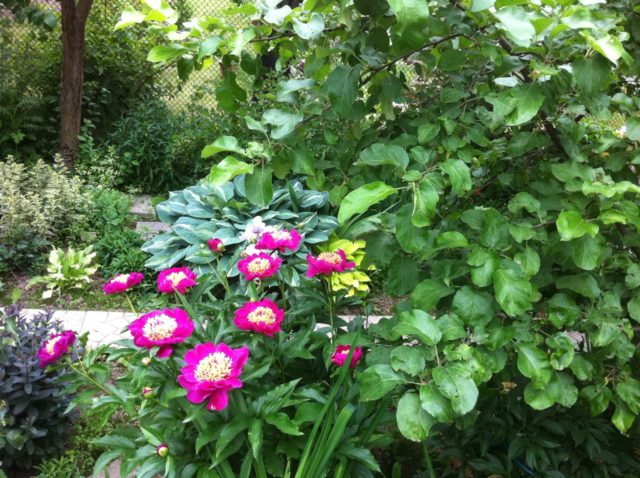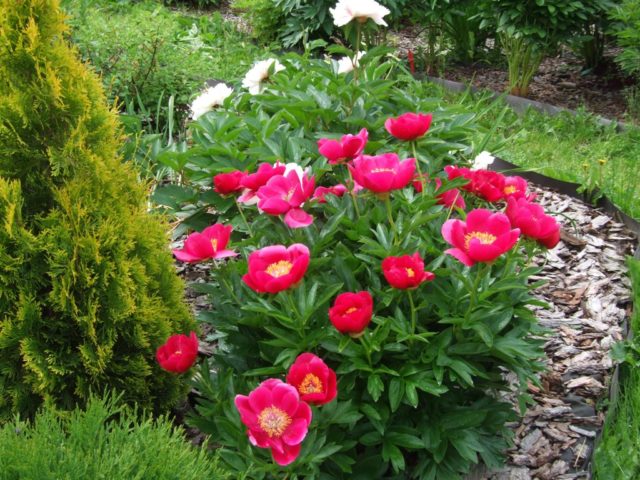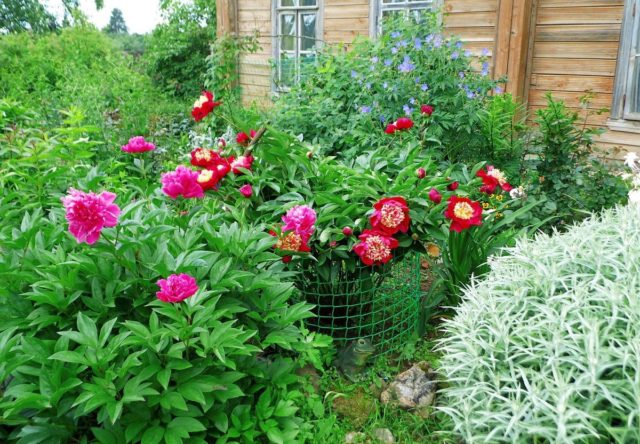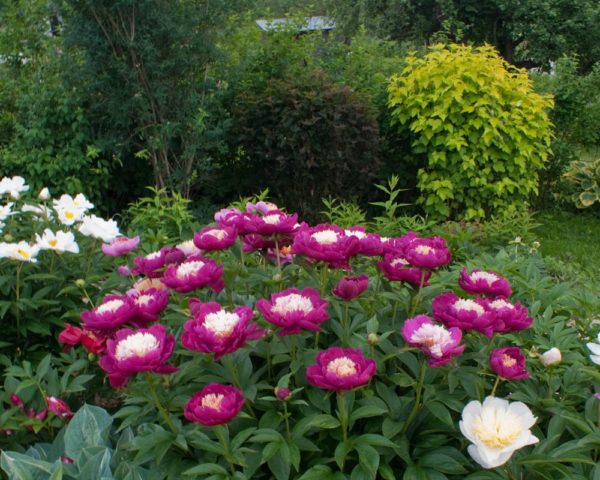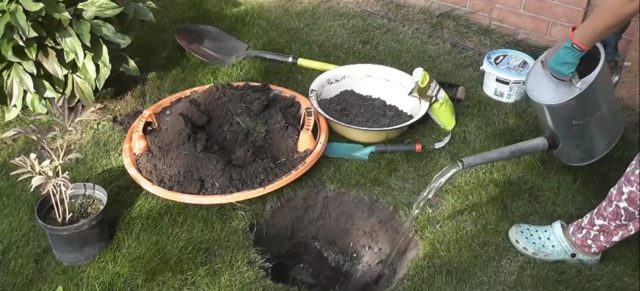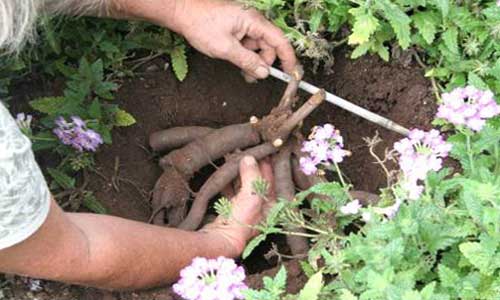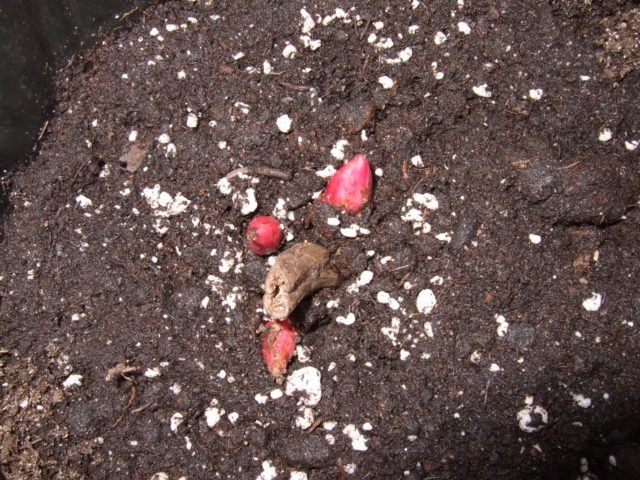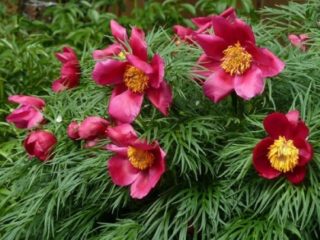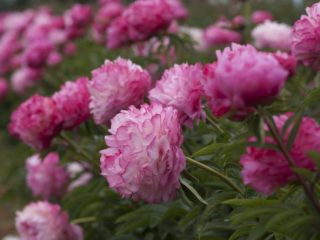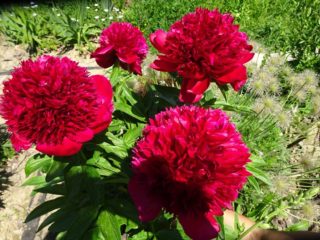Content
Peony White Cap is a variety of American selection, created in the middle of the last century and awarded several gold awards. The plant is characterized by a long-term life cycle, it can bloom in one place for about 12 years. They cultivate a culture for garden decoration and creating bouquets.
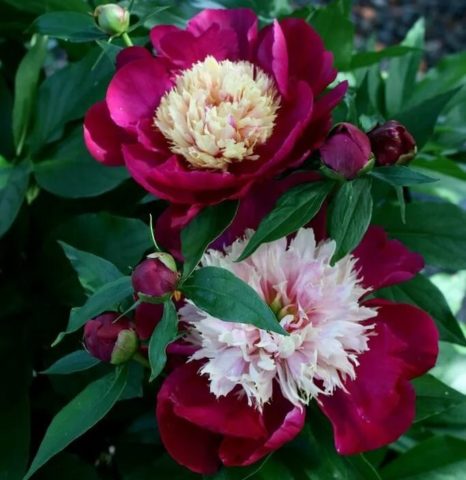
White Cap is classified as a medium flowering crop.
Description of Peony White Cap
A perennial plant with a well-developed root system, grows rapidly, forms a dense, dense aerial part. After three years of vegetation, the peony enters the reproductive phase, begins to bloom and form many root shoots (tubers).
The characteristics of the herbaceous variety White Cap are as follows:
- sprawling bush (up to 1.2 m in diameter);
- peduncles erect, rigid structure, dark green, with a smooth surface. Reach a height of 80-100 cm;
- up to four lateral shoots ending in buds are formed on the stem;
- the root system is mixed, superficial, forms a root circle with a diameter of 40-50 cm, the central part deepens by 40 cm;
- leaves are dark green, elongated, lanceolate type, the surface is smooth, glossy, the structure is hard. On the shoots are arranged alternately;
- tops remain until October, acquiring a maroon color.
Peony White Cap is grown for decoration of gardens and for cutting. On one stem, from 3 to 5 flowers can bloom, under their weight the peduncles bend, so the bush disintegrates.
A plant with a bright color of inflorescences needs a sufficient amount of ultraviolet radiation for photosynthesis, a sun-loving peony, it will not bloom under the crown of large-sized plants, shade tolerance is weak. The herbaceous shrub White Cap loses its crown density, the leaves are faded in the shade, if single buds appear, the flowers are small, dim.
The varietal characteristics indicate the frost resistance of the plant -40 0C. According to gardeners, the White Cap peony corresponds to this parameter. An ornamental plant is grown in the gardens of the European part, the peony feels comfortable both in the warm climate of the Stavropol, Krasnodar Territories, and in the conditions of Siberia, Central, Central Russia, in the Urals. Depending on the climatic zone, agricultural technology will slightly differ in the frequency of watering and preparation for the winter.
Flowering features
Milk-flowered White Cap belongs to the Japanese group of peonies. The culture blooms at the end of May, in warm regions this happens a little earlier. Duration of flowering 15 days. The biological cycle of a flower lasts from 6 to 8 days. Blooming of buds is massive, the bush is completely covered with bright inflorescences.
Description of White Cap peony:
- flowers of an anemone type with a contrasting color, their diameter is 15-17 cm;
- 2 rows of rounded maroon petals;
- the core consists of densely spaced, feathery, light pink staminodes (stamens);
- at the end of the biological cycle, the central part becomes white or cream.
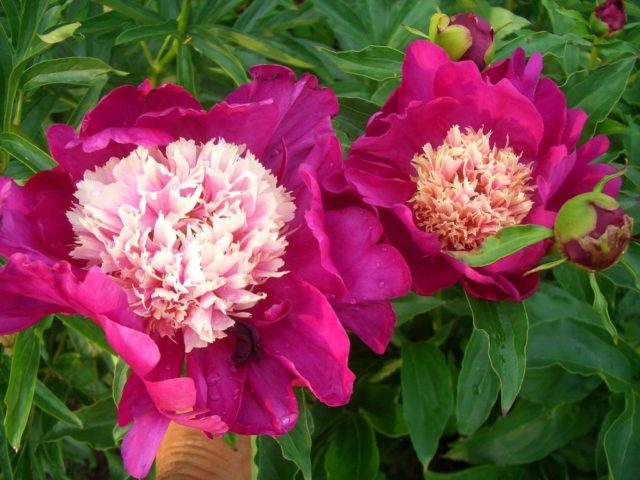
In cloudy or rainy weather, the color of the inflorescences remains unchanged.
The plant does not give a sufficient number of buds even with periodic shading, therefore, when choosing a site, this feature is taken into account in the first place.
Application in design
White Cap with a contrasting color and dense green mass is combined with flowering plants, ornamental shrubs, dwarf conifers. Often used in design in single or mass planting with other varieties of peonies.
The White Cap variety is planted together with plants that, like a peony, need a neutral soil composition:
- irises;
- hydrangea;
- daylilies;
- tulips;
- roses.
White Cap does not tolerate the proximity of large-sized plants with a dense crown, crops with a creeping root system. Due to the different biological needs for the composition of the soil, it does not get along well with some varieties of junipers.
White Cap can be grown on loggias and balconies if they are located on the south side of the building and are illuminated by the sun most of the day.
Examples of growing peonies for decorating gardens and territory:
- to create a bright accent on the flower bed;
Peony favorably emphasizes ornamental plants
- planted for tamping low-growing conifers;
Bright peonies go well with golden thuja
- create compositions in summer cottages;
- to create the foreground of a wilderness;
The contrasting colors of White Cap peony flowers are combined with almost all types of plants
- planted solo in the central part of the lawn;
Reproduction methods
The White Cap variety is sterile, does not produce seeds, therefore, the culture is propagated only vegetatively. You can cut cuttings from the middle of strong shoots before flowering, place them in water, and when root filaments appear, transfer them to the ground. The method is not very productive, the survival rate of cuttings is weak. At least three years will pass before the first budding.
Most often, White Cap herbaceous peony is propagated by dividing the mother bush. They choose strong specimens older than three years of age, make plots and plant them. The procedure is carried out at the end of summer, when the root system forms young tubers. In the spring, the culture will bloom.
Landing rules
A plant with a spring flowering period, therefore, a peony is planted at the end of summer, approximately in August, so that it has time to adapt and bloom for the next season. Saplings purchased from the nursery can be placed on the site in the spring. They will bloom after reaching the age of three.
The site is taken away on neutral soil, a place with stagnant water will not work, since at high humidity the peony will not grow. For planting, choose a place without shading with light, fertile soil.
Prepare the territory 10 days before the planned work:
- dig a hole 50 cm deep and 40 cm wide, thoroughly moisten it;
- the bottom is covered with a drainage pad;
- from above, a fertile substrate of compost and peat is poured with the addition of complex mineral fertilizers;
- leave about 20 cm to the edge of the hole, fill the cavity with water.
If reproduction is carried out by division, the bush is carefully dug up, 5 vegetative buds are left on the plots, the soil is gently washed off and left for 4 hours. During this time, the root will wither and will not be fragile. The acquired planting material with a closed root is planted with an earthen clod.
If you deepen it deeper, then the peony will not bloom, if left on the surface, it will not be able to form a thick green mass.
Landing consists in performing the following actions:
- a stick is placed on the edges of the pit;
The crossbar will not allow the root to settle
- focusing on the bar, pour the mixture to the bottom;
- fix the peony to the rail;
The kidneys above the surface can protrude, the main thing is that their base is deepened correctly
- fall asleep to the top with sod soil mixed with compost.
The plant is watered, and the trunk circle is covered with mulch.
Follow-up care
Care for the White Cap variety is standard, no different from the agricultural technology of other varieties. The following activities are carried out:
- Watering a peony is required in any growing season, an adult plant needs 25 liters of water for two weeks.According to this parameter, the irrigation regime is oriented taking into account precipitation. For a young plant, measures are carried out in a small volume in order to prevent the top layer from drying out and moisture stagnation.
- White Cap peony seedlings begin to be fertilized in the third year of the growing season. When the first shoots appear on the plots, they need potassium. During shoot formation, nitrogen and ammonium nitrate are introduced. During the budding period, they are fed with organic matter and superphosphate. In July, fertilize with a complex mineral agent.
- Loosening is necessary for aeration, it is carried out at the first signs of soil compaction, along the way, weeds are removed.
When mulching a plant, loosening is not relevant, since the soil does not dry out for a long time. In this case, weeds are removed as they appear.
Preparing for winter
The aerial part is cut off only when it begins to die off. Pruning the peony early is not recommended.
Preparation for winter is carried out around October, after the first frost:
- the bushes are watered abundantly;
- peonies planted in the current season huddle;
- increase the layer of mulch;
- cover with straw on top;
- install arcs and stretch any covering material.
For an adult White Cap peony, water-charging irrigation, organic feeding and an increase in the mulch layer are enough.
Pests and diseases
If the site is selected in accordance with the biological requirements of the peony, the White Cap variety is not sick. Only in the shade and with high soil moisture can gray rot develop. In such cases, the plant is rarely saved. At the first signs of illness, it is necessary:
- dig up a bush;
- wash off the soil;
- remove parts of the affected root;
- treat with any antifungal agent and transfer to another sunny and dry area.
Of the pests on the White Cap, the rootworm nematode and the bronze beetle parasitize.
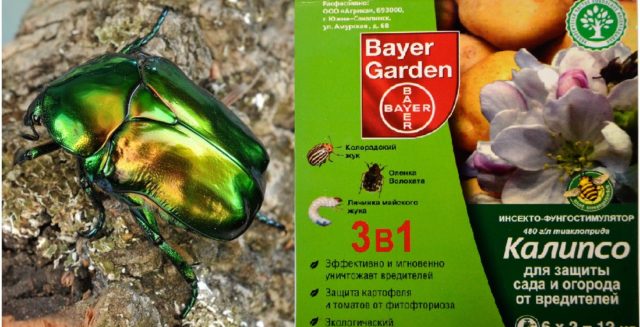
If insects are found, the bushes are treated with insecticides
Conclusion
Peony White Cap is a herbaceous perennial shrub. It is a popular variety that is suitable for planting in cold and warm climates. The plant has large bicolor inflorescences and decorative green mass. It grows quickly and blooms profusely only on fertile soil and with sufficient lighting.
Peony White Cap reviews
